

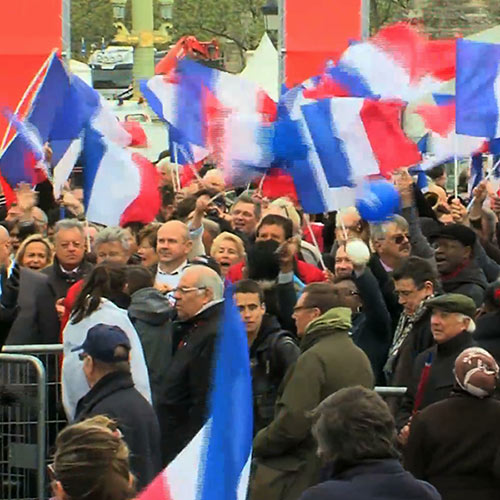

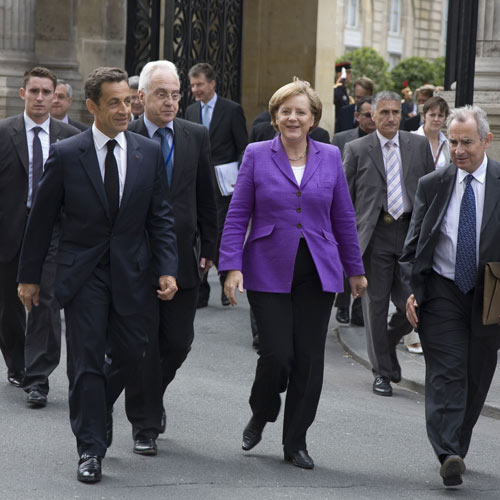
France Doc Productions is an audiovisual production company based in Paris.

French-Mexican journalist based in Paris, Auxilio Alcantar worked for 20 years for Radio Francia Internacional (Radio France International): making presentation of news, production of cultural, political reports and magazines, as well as major societal debates. He taught radio production at Associated Radio RFI. It was Paris correspondent for Swiss Radio International, Stereo Rey, Cultural Supplement "El Angel" ("The Angel") in the Mexican newspaper "Reforma" and the German radio Deutsche Welle. She graduated in Communication Sciences at UNAM, has a master degree and a DESS Masters in Political and Social Communication at the Sorbonne Doctoral Studies at the Sorbonne in Paris. She studied TV in the School of Journalism in Paris, followed video and editing courses at the Centre for Professional Training of Journalists (CFPJ), and courses in lighting and special effects in Andésite. She was co-director of the documentary "Porfirio Díaz, a century of exile" and in 2013 created the audiovisual production company France Doc Productions.

Independent Director of French nationality. Christian Beltrame is the author of cultural nature documentaries: The homes of writers, Robert Tatin, Latin American artists in Paris, Porfirio Diaz a century of exile.
After a BA and MA in business management he graduated in real estate, handling heritage. Then he turned to his passion: the image. He trained with film director Sergio García Michel with whom he took courses: Shooting domain, narrative techniques, types and composition of shots, lighting. In the Créa Image School of Paris he was perfected in sound assembly and editing on Final Cut 7. In Andesite Formation, he was perfected in special effects and Motion. He established in 2011 the company France-Lat Am Productions which merged later in 2014 with France Doc Productions.
After governing Mexico (over three decades), President Porfirio Díaz resigned and emigrated to the City of Light. He arrived in Paris in June 1911 and died on July 2, 1915 His last years were spent in France and his remains are in the cemetery of Montparnasse.
The goal of the documentary is to describe the daily life of Díaz during his exile: travel, meetings, tributes, but also for the view and opinion that Europe had for the president. Why is the respectful treatment and tributes politico-military?
Díaz was seen as one of the greatest statesmen of the American continent. It was recognized his contribution to the development of Mexico: construction of railways, telecommunications, water, electricity, hospitals, schools, the first university, monuments, consolidation of public finances, political stability and the country's openness to the world.
In one of the first visits to the National Museum of the Disabled, Díaz was received by Gustave Niox, director of the institution. They had met in Mexico during the second French intervention (1862-1867). The documentary retraces this events. Historians of France and Mexico analyze the reasons for the intervention and support of Napoleon III to establish the empire of Maximilian. Díaz had fought militarily France and yet Niox puts on his hands the sword of Napoleon Bonaparte. Veterans, according to historians, admired the gallant and loyal military enemy.
Alternately, the film shows the origins and consequences of the Mexican Revolution (one of the reasons for the departure of Díaz). Successive rebellions and pressure and military invasion of the United States to Mexico are also on show.
During his tenure, Díaz restored diplomatic relations with France and diversified trade, favoring Europe. The introduction and expansion of Barcelonetas occurs during the Porfiriato: control of the textile industry, opening large stores such as "Palacio de Hierro" and "Liverpool". The French owned the largest factory of paper, cigars and beer; addressed some banks and had a monopoly on the issue of banknotes.
The gratitude of the Barcelonetas is still in force. One of the main avenues in the Alpine town bears the name of Porfirio Díaz and Barcelonette the calls itself the 'Mexican city of France'. Mexico's festival takes place annually in August.
In parallel to these episodes, the documentary also describes what Díaz lived during World War I. The war was in the making when he arrived in Paris and the Great War breaks out during his stay in France. How Díaz lived the war in Europe and the revolution in Mexico? This is another of the points discussed.
The French-Mexican relations have a long history, with close ties to cultural, diplomatic and commercial level. Porfirio Díaz played a major role in bringing the two countries. A century after his exile, the documentary reminds the man who was a turning point in the history of Mexico.
The documentary (90 min.) Is illustrated with archive images (photos and films of the time), interviews with great historians of Mexico and France, testimony of a member of the Diaz family, and filming in France and Mexico.
Documentary by Auxilio Alcantar and Christian Beltrame.
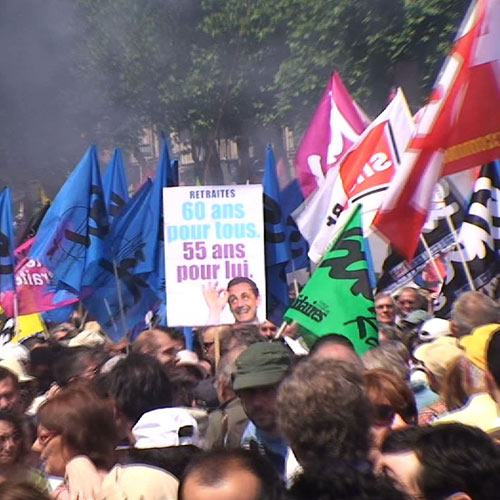
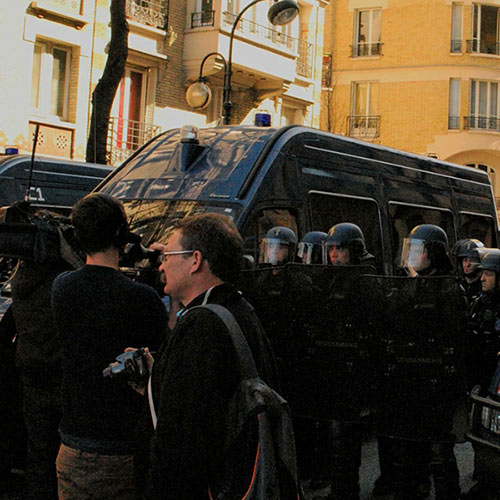
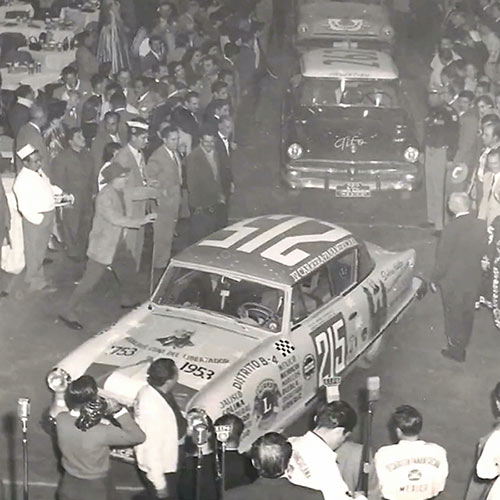
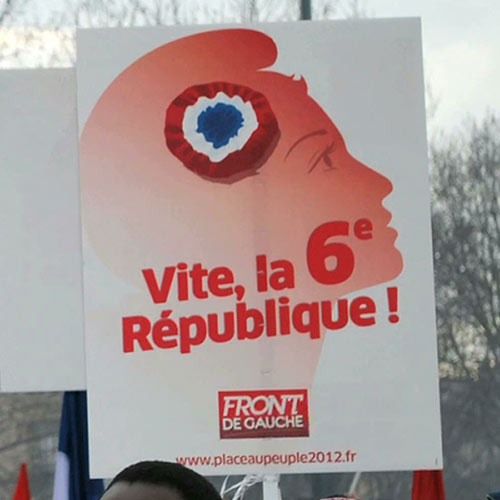
Nicolas Sarkozy was born in 1955, is a lawyer by profession and has to his credit a long political career: Congressman, Minister of Budget, Interior, Communication, Economics and Finance. He was leader of his UMP party, which led him to the presidency in 2007. With a controversial balance, was a candidate for his own succession in elections in 2012, which lost face of François Hollande. Some analysts believe that the failure of Nicolas Sarkozy was due to his style, personality and unpopular measures implemented as: reform the pension system which increased the retirement age , the decline in purchasing power, the elimination of jobs and a speech that was bordering the extreme right over the last few days of his campaign. However other analysts say the president positively transformed the future of France: he knew how to handle the acute financial crisis gave greater autonomy to universities and played a major role in the construction of the European Union. Will Sarkozy seek revenge in the 2017 presidential elections?
François Hollande, was born in 1954 in the city of Rouen. He studied politics at the major French schools where the ruling class of the country is formed. At the age of 20, he directed the union's leftist students (UNEF) and at 25 joined the Socialist Party. He was counselor for economic affairs and deputy of Corrèze. In 1997 he was elected as Secretary of the Socialist Party, a position he held until becoming training candidate for the presidential elections of 2012, elections he won ahead of Nicolas Sarkozy. François Hollande proposed fight unemployment and financial capitalism, creating 60,000 jobs in the sector of national education, reduce the public deficit to 3% by 2014 and to be an exemplary president. Months after his election, promises keeps there, but the reality is different. According to opinion polls, Hollande is the most unpopular president of the Vth Republic. Will things change between now and 2017?.
Manuel Felguérez was born in Zacatecas, Mexico in 1928. First he studied in Mexico and afther that at the Academy of La Grande Chaumiere in Paris, as a disciple of the Russian master Ossip Zadkine. Felguérez went from Cubism, Expressionism, questioned the nationalist aesthetics of the muralists ... to finally register as a painter and sculptor of abstract art. His works have been exhibited in museums: San Francisco, Paris, Brussels, London, Venice, Madrid, Lisbon, New Delhi, Jerusalem, Cairo, Santiago de Chile, Argentina Córdoba, among others. Manuel Felguérez lives in Mexico and inone of his trips to Paris we told his story and his love for France.
Jean-Luc Mélenchon was born in Morocco in 1951 where he spent his childhood. At the age of 11 he arrived in France, attended the May 68, Trotskyism, and then joined the Socialist Party for nearly 30 years. He was deputy minister and MEP. He introduced himself as a presidential candidate in the 2012 election, running in fourth. Mélenchon castigates liberal globalization, the decline of social rights, growing poverty, and denounces the gap between rich and poor.
Millions of Parisians, tourists and curious, annually attend to the beaches in the municipality building during the month of August, in the heart of Paris. Along the banks of the river Seine has everything: tons of sand to simulate the beaches, hundreds of trees, palm trees, umbrellas, chairs and places to play sports or artistic activities.
Thoisy Pierre is a Frenchman who has participated in more than 400 car races, including the 24 hours of Le Mans, the 24 Hours of Nürburgring and of course, the famous 'Carrera Panamericana' (Panamericana Race) in Mexico, which he has been 7 times champion. The Carrera Panamericana was created in 1950, suspended in 1955 due to an accident, and re-opened in 1988 in the form of rally. The race attracts many world pilots involved with antique cars from the biggest brands. The race lasts a week and all across Mexico, from south to north. Thoisy Pierre reveals his passion for cars, speed and the Panamericana.
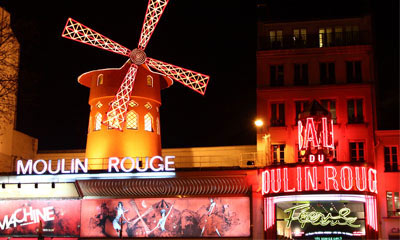
Every night hundreds of tourists attend the famous Parisian cabaret, located in the district of Montmartre. Among applause, the atmosphere of the Belle Epoque, the decor ... it still evokes the paintings of Toulouse-Lautrec, famous artists who were created in the room are still remembered: Mistinguett, Yves Montand, Edith Piaf, Ginger Rogers, Frank Sinatra, Charles Trenet and Charles Aznavour, among others. People come to evoke the past but also to enjoy the present and especially the spectacle of the Doris Girls, young monumental beauty of dancing at the legendary cabaret.

In France are scarce both general practitioners and specialists. There is lack of surgeons, obstetricians, radiologists, anesthesiologists, ophthalmologists, psychiatrists, and emergency rescuers. To ensure the operation of hospitals, and clinics in remote areas and in the rural sector, France must hire foreign doctors.

France beats the European record for canine population and the phenomenon is growing. To the extent that marketers talk about dog attitud, the inordinate passion of the Masters generating a chic-tendance: coats couture of cashmere or fur, foie caviar for lunch, skid boots for rainy season, shorts in silk, 5 star hotels for when the master is travelling, canine psychoanalyst sessions, shampoo, powder for bad breath, canine perfume, What a dog's life!
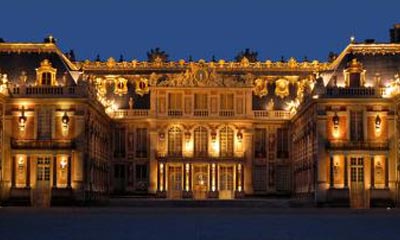
The Palace of Versailles is, after the Eiffel Tower and the Louvre Museum, the most visited monument of France. Receives more than 6 million tourists per year. It currently serves as a museum but the palace was once the official residence of King Louis XIV and the seat of absolute monarchy for over a century, from 1682 to 1789. The gardens were designed by the great landscape architect André Le Nôtre and the construction of the palace was led by architect Louis Le Vau , among others. Here’s the history of the palace.
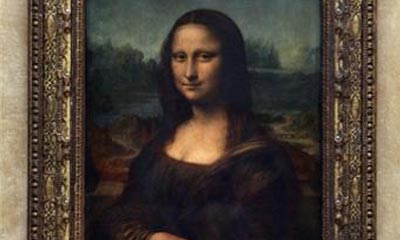
On August 23rd 1911, the cultural and artistic world of France was perplexed by the news of the theft of the 'Mona Lisa' portrait. The masterpiece of the Italian painter Leonardo da Vinci had a place of honor in one of the most important French museum galleries.
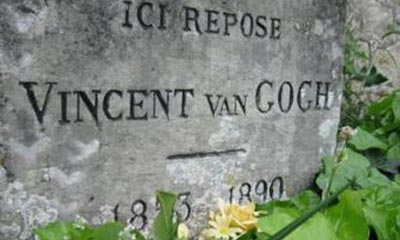
At 30 kilometers from Paris is located the small town of Auvers-sur-Oise, emblematic because the final resting place of the painter Vincent van Gogh is located there, who died at 37 years old. The great painter lived in the room No. 5 of the Ravoux Hostal, now classified as a historical monument. A few steps away is the church so well illustrated by him and a little further away the cemetery where he rests beside his brother Theo van Gogh.
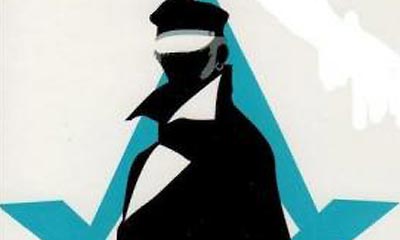
Freemasonry appears in the collective imagination as a myth, some people think about it like the hidden world full of secrets, and other sees it almost like a cult. But for those who want to discover what it really is Freemasonry, Paris has a museum dedicated to this institution, born in Europe in the late seventeenth century. The museum is located in the 9th district of Paris, is an area of over 400 square meters that houses more than 10,000 objects and a library with over 23,000 books.
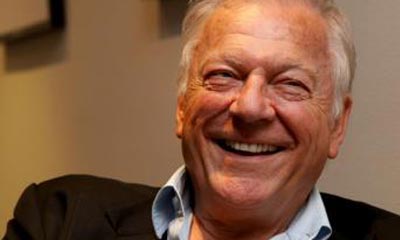
In his recent book, the journalist and author analyzes the cultural life in Paris during the German occupation of France. During this period, cultural activities were not interrupted: 105 cinemas remained open, 25 theaters and more than 20 clubs, in order to ensure the livelihood of artists, but also to amuse a demoralized people.
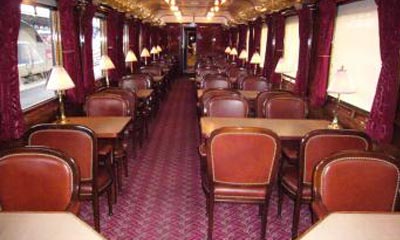
The most famous intercontinental train in the world, decorated by the also famous René Lalique, celebrated the work of the great poet of glass and father of modern jewelry. 20 years ago, Lalique entered the world of perfumery and was in the Orient Express where on January 19, 2012, came his great anniversary. The long journey of the Orient Express, created in 1883, has been declining over the years. But his memory remains in the memory of world travelers: it was the most beautiful and luxurious train, and the first to link Europe with Asia.

Interviews and Articles prepared for the cultural supplement "El Ángel" ("The Angel) of "Reforma"newspaper.
View Articles...
France Doc Productions
5 rue Péclet
75015, Paris
France
e-mail:
christianbeltrame@francedocproductions.com
auxilioalcantar@francedocproductions.com
20 de mayo de 2012
Auxilio Alcantar
Carlos Fuentes eligió París como su destino final, en el cementerio de Montparnasse, donde descansan los restos de grandes artistas, pero donde también lo esperan sus hijos Carlos y Natasha Fuentes Lemus. Esta semana, la noticia de su muerte tuvo resonancia en Francia, donde Fuentes encontró lectores y amigos; donde su obra fue leída, admirada y analizada. Entrevistados en París, Jean Daniel, Florence Olivier, Claude Fell y Ramón Chao lamentan la muerte del intelectual y, a la vez, la del amigo entrañable
Fell: Polígrafo y Universal
Como un escritor universal y un personaje completo, abierto a la literatura; como un hombre que escribía y, al mismo tiempo, reflexionaba sobre la condición de escritor, recuerda Claude Fell a Fuentes. "Alguien capaz de hablar con mucha pertinencia, tanto de Cervantes como de Kundera, por ejemplo. O sea, una cultura universal. Leía todo lo que se publicaba, estaba al tanto de todo y sabía, como Octavio Paz, aprovecharlo, utilizarlo y difundirlo", asegura Fell, especialista en literatura latinoamericana. En entrevista, el ensayista y traductor lamenta la muerte de su amigo Carlos Fuentes.
"Tengo una inmensa tristeza porque era un gran amigo y lo admiraba enormemente. Cada vez que venía a París y teníamos oportunidad de vernos, nos veíamos. Lo conocía desde hacía muchos años. Mi esposa (Eve-Marie Fell) y yo tradujimos al francés dos de sus libros, La campaña y Valiente mundo. Yo hice después la traducción del ensayo Cervantes o la crítica de la lectura, y soy coautor de un libro sobre él, que reúne textos de Fuentes, investigaciones sobre su obra y correspondencia inédita. Es realmente una gran pena la que siento hoy".
A nivel literario, ¿cuál es la importancia de Fuentes? Utilizo la palabra que se usó con Alfonso Reyes, creo que era un inmenso "polígrafo", en el sentido positivo del término. Fuentes era dramaturgo, ensayista, novelista, cuentista.
¿Y si tuviera que destacar sólo una o dos de sus obras? La región más transparente, que es el primer libro que leí de él. La muerte de Artemio Cruz es también un gran libro y, por supuesto, Terra Nostra. Son obras importantes por la maestría con que fueron escritas. Terra Nostra es una obra maestra. Esos libros me gustan también por la reflexión humanista que se desprende de ellos. No es sólo una reflexión sobre la identidad mexicana, como en los primeros de sus libros, sino también una relación entre Europa y América, y muchos temas que él dominaba totalmente.
Hoy todos los diarios y revistas franceses hablan de él, rindiéndole homenaje. ¿Era Fuentes importante para Francia? Sí, en Francia mucha gente lo conocía. Hace dos años, cuando México fue el país invitado en el Salón del Libro de París, él estuvo con nosotros en un salón y dio una conferencia. La gigantesca sala estaba repleta. La gente lo conoce y lo lee en Francia. Para una mayor divulgación, sus libros fueron publicados también en edición de bolsillo. Son obras accesibles a mucha gente. Es, junto con Gabriel García Márquez, el escritor latinoamericano más conocido en Francia.
¿Qué anécdota puede compartir? Hace muchos años (creo que en 1973) presentó en Aviñón El tuerto es rey. Yo escribía en aquella época en el periódico Le Monde. Me invitó junto con otras personas y nos encontramos en grupo en Aviñón. Estaban García Márquez, Mario Vargas Llosa, José Donoso, fuimos a buscar también a Julio Cortázar, que vivía cerca, y nos reunimos. Fue un encuentro que me dejó un recuerdo imborrable.
Olivier: Imaginario en Libertad
"Fuentes seguirá viviendo, porque los lectores somos los fantasmas de los escritores. Así lo escribió él, y así lo retomo yo", afirma la ensayista Florence Olivier.
Para la crítica francesa, lo que debe destacarse en la obra de Carlos Fuentes es la extraordinaria libertad y soltura de su imaginario "Su defensa e ilustración del género de la novela, su pasión por la novela, por la ficción, y su capacidad de reflexión y de ensayista, y en las formas de la ficción", explica. "Es ver cómo el pensamiento se traduce en historias, para decirlo simplemente".
Olivier, autora de Carlos Fuentes o la imaginación del otro, señala que recibió la noticia del fallecimiento con mucha tristeza.
"Todavía estoy incrédula, porque pensaba que iba a escribir las muchas novelas anunciadas en su Edad del Tiempo, la arquitectura de la obra completa de ficción. Anoche conté los títulos que había anunciado y creo que conté como seis obras que aún esperan".
Recuerda que lo conoció a través de sus libros, en 1984; y, personalmente en Estados Unidos, durante un coloquio dedicado en parte a su novela Aura, en 2002.
"Después lo vi muchas veces en cuestiones académicas; para sus 80 años, en un congreso en torno a La región más transparente, por los 50 años de la novela", dice.
"Me dio alegría haberlo visto en París hace unos meses, durante un coloquio que organicé en su presencia, en el mes de octubre. Lo vi contento y feliz en ese momento. También lo había visto muy feliz en la Universidad de Burdeos, donde le dieron un Doctorado Honoris Causa (en octubre de 2011)".
Olivier señala que hace apenas 10 días participó en un coloquio en Los Ángeles, dedicado a la obra de Fuentes.
"Leí un trabajo sobre Terra Nostra, novela extraordinaria, que empecé a trabajar recientemente. Este libro es un monumento en la trayectoria de la obra. Muchos lectores de Fuentes consideran monumental también la primera parte de la obra, pero yo he trabajado más la segunda, las novelas publicadas después de 1985".
Según Olivier, Terra Nostra es una gran memoria de la cultura hispanoamericana, de la América española, y es toda una historia del pensamiento occidental.
"Es un elogio del humanismo, de cómo hubiera podido ser el humanismo en América si hubiese sido otra la colonización".
Recientemente, dice, volvió a leer Una familia lejana.
"Es una novela extremadamente llena de gracia, francomexicana o mexicano francesa, mejor dicho. Toda una fábula sobre historias que se entrecruzan entre Francia y México".
La ensayista también evoca Carolina Grau, una colección de cuentos. "Es muy estilizada, donde vuelve sobre sus amores, de ficción o literarios. Sobre historias que desde la adolescencia lo persiguen, como El Conde de Montecristo, por ejemplo".
En la Universidad de París III, La Sorbona, Olivier ha impartido cátedra sobre la obra de Fuentes.
"Estoy ahora en literatura comparada, entonces comparé Manhattan Transfer, de John Dos Passos, con La región más transparente. También Constancia y otras novelas para vírgenes, en especial sobre la relación entre la ciudad, la arquitectura y la literatura".
A lo largo de su trayectoria, el escritor mexicano recibió múltiples premios, como el Rómulo Gallegos, el Cervantes o el Príncipe de Asturias, pero no el Nobel, que de acuerdo con Olivier debió tener.
"Los lectores de Fuentes sí lo esperábamos. Y yo creo que se lo merecía".
Chao: Siempre con 'X'
"Hoy, mi pena es grande, no me lo esperaba", expresa el periodista y escritor Ramón Chao sobre la muerte de Fuentes. "La última vez que lo vi fue hace un año en Mallorca, cuando le dieron el Premio Formentor de las Letras 2011. Estuvimos hablando un buen rato; él, como siempre, muy afectuoso, muy correcto, muy elegante".
¿Cómo lo conoció?
Lo conocí por Mercedes Iturbe, cuando creamos en París el Premio Juan Rulfo. Carlos nos ayudó en la selección de escritores para el jurado, y desde entonces nos llevábamos muy bien.
¿Recuerda alguna anécdota?
Hay algo de lo que me acuerdo. Fuentes era Embajador de México en Francia (en 1974), dimitió creo que tres años después, en protesta contra la nominación del nuevo embajador de México en Madrid, el ex Presidente Díaz Ordaz (a quien Fuentes juzgaba responsable de la masacre de estudiantes en México). Yo fui a verlo a la Embajada (para un artículo que iba a publicar en la Revista Triunfo), charlamos mucho sobre la cuestión. Me fui y al llegar a la radio (RFI) me llamó por teléfono y me dijo: "Oye, Ramón, para el artículo, escriben México con 'x', ¡eh!".
Yo le respondí: "¡Hombre, claro!, yo quiero mucho a México y sé que lleva 'x'. La cruz en la frente". Él contestó con mucho humor: "No, no tanto. Ése era Alfonso Reyes".
Después comentó la historia de la "x" y la "j". Acabé por hacer un segundo artículo, México siempre con "x". Debo confesar que mi primera novela está muy influenciada por Aura, la utilicé para un personaje. Un día se lo conté y me contestó: "Bueno, hombre, siempre hay que partir de algo, ¿no?".
×